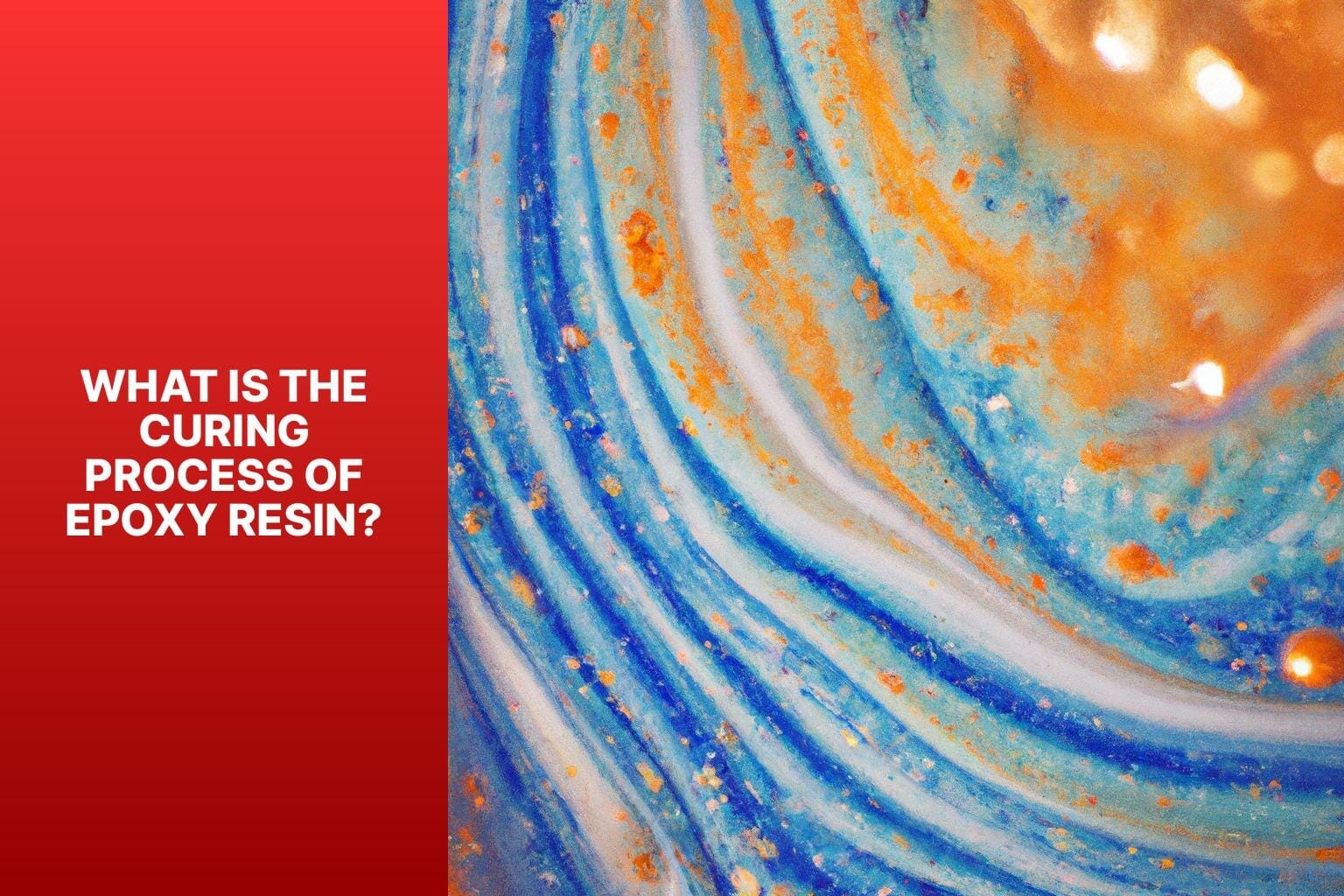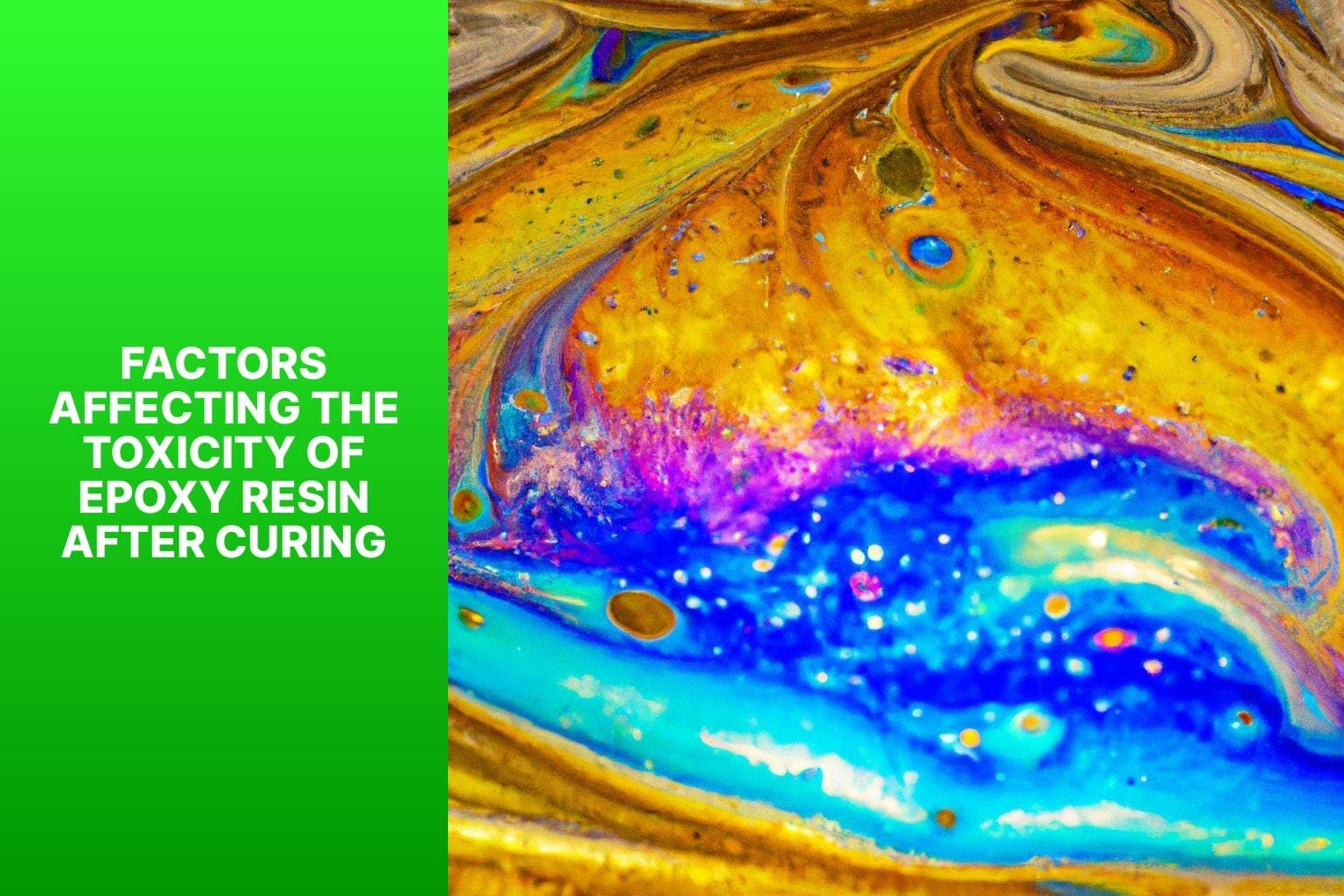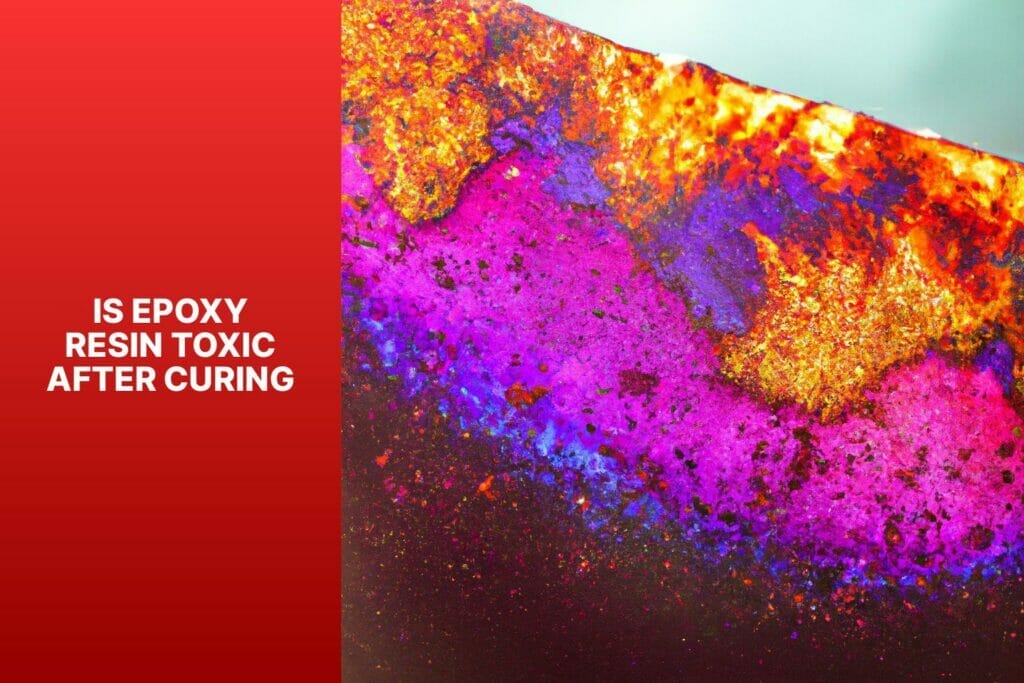Epoxy resin is a popular material used for various applications, ranging from crafts and DIY projects to industrial uses.
Understanding its properties, including its toxicity after curing, is essential for ensuring safety during its handling and use.
What is Epoxy Resin?
Epoxy resin is a synthetic polymer that can be manipulated into a liquid form and hardened into a solid state. It is commonly used as an adhesive, coating, or casting material due to its excellent durability, strength, and resistance to chemical and environmental factors.
What is the Curing Process of Epoxy Resin?
The curing process of epoxy resin involves a chemical reaction between resin and hardener. This reaction leads to the transformation of the liquid resin into a hardened, solid structure. The curing process can take several hours to days, depending on the specific type and formulation of the epoxy resin.
Is Epoxy Resin Toxic After Curing?
While epoxy resin is generally considered safe once it has fully cured, there are potential health risks associated with its use. The toxicity of epoxy resin after curing can depend on several factors, including the composition of the resin, proper ventilation and safety measures during the curing process, and individual sensitivities or allergies.
What are the Potential Health Risks?
Exposure to uncured epoxy resin or its components, such as volatile organic compounds (VOCs), can pose health risks. These risks may include respiratory irritation, skin sensitization, and eye irritation. Once the epoxy resin has fully cured, it is typically considered non-toxic and safe.
Factors Affecting the Toxicity of Epoxy Resin After Curing
- Composition of the Epoxy Resin: Different epoxy resin formulations may contain varying levels of potentially toxic components. Understanding the specific composition and following the manufacturer’s guidelines for safe use is essential.
- Proper Ventilation and Safety Measures: Adequate ventilation during the curing process helps minimize the concentration of VOCs in the air, reducing the risk of respiratory irritation. Following recommended safety measures, such as wearing gloves and a mask, further enhances safety.
- Sensitivities and Allergies: Individuals with pre-existing sensitivities or allergies may be more prone to adverse reactions when exposed to epoxy resin, even in its cured state. It is crucial to be aware of personal sensitivities and take necessary precautions.
How to Minimize Exposure to Epoxy Resin’s Toxins
To minimize exposure to any potential toxins associated with epoxy resin, consider the following measures:
- Proper Handling and Storage: Follow the manufacturer’s instructions for handling, storing, and disposing of epoxy resin and its components.
- Use of Personal Protective Equipment (PPE): Wear protective gloves, goggles, and a mask to prevent direct contact with the resin and reduce the risk of inhalation.
- Working in a Well-Ventilated Area: Ensure sufficient airflow during curing by working in a well-ventilated area or using ventilation devices, such as fans or exhaust systems.
Understanding the factors affecting the toxicity of epoxy resin after curing and taking appropriate precautions makes it possible to work with this versatile material safely and enjoy its benefits in various applications.
Key takeaway:
- Epoxy resin is not toxic after curing: It is generally considered non-toxic and safe for use once fully cured.
- Potential health risks: There can be potential health risks associated with improper handling and exposure to uncured epoxy resin, which include respiratory irritation and skin allergies. Proper precautions should be taken.
- Factors affecting toxicity: The toxicity of epoxy resin after curing can be influenced by factors such as the composition of the resin, ventilation during the curing process, and individual sensitivities or allergies.
- Minimizing exposure: To minimize exposure to any potential toxins in epoxy resin, it is important to handle and store it properly, use personal protective equipment, and work in a well-ventilated area.
What is Epoxy Resin?
Epoxy resin is a synthetic adhesive and coating formed by mixing two components – a resin and a hardener. This combination results in a hard and durable material.
Known for its strong bonding properties and resistance to moisture, chemicals, and heat, epoxy resin is commonly used in construction, woodworking, and art.
It can be transparent or opaque and pigmented or clear. Interesting fact: epoxy resin has a high tensile strength, making it useful in applications that require strength and durability.
What is the Curing Process of Epoxy Resin?

Photo Credits: Diyepoxyresin.Com by John Ramirez
The curing process of epoxy resin involves the following steps: First, mix the resin and hardener in the recommended ratio using a clean container. Make sure to stir well for thorough mixing.
Next, evenly apply the mixed epoxy resin to the desired surface using a brush, roller, or spatula.
Once applied, allow the epoxy resin to cure undisturbed. The curing time depends on factors such as temperature and humidity, usually mentioned on the packaging or in the product instructions.
It’s important to note that the epoxy resin will become tacky before fully drying, so it’s best to avoid touching or disturbing the surface.
After drying, the epoxy resin will undergo a full cure, typically taking several days and enhancing hardness, strength, and chemical resistance.
Pro-tip: Following the manufacturer’s instructions for mixing ratios, curing times, and specific recommendations is crucial. Working in a well-ventilated area or wearing a respirator when working with epoxy resin that emits fumes is advisable.
Is Epoxy Resin Toxic After Curing?

Photo Credits: Diyepoxyresin.Com by Peter Thompson
Epoxy resin is not toxic after curing. Once cured, it becomes an inert material that is safe to handle and use. It no longer emits harmful fumes or presents any health risks.
The curing process transforms the liquid resin into a solid, stable form.
After curing, epoxy resin is commonly used in various applications, such as coating and sealing surfaces, creating art crafts, and even food contact applications.
The safety of epoxy resin products depends on the quality and purity of the materials used. Choosing epoxy resin products from reputable manufacturers that meet safety standards is crucial.
In a similar historical context, asbestos was once widely used in construction for its fire-resistant properties. It was later discovered that asbestos fibers can cause severe health issues, including lung cancer and mesothelioma.
As a result, many countries have banned or heavily regulated the use of asbestos. This serves as a reminder to continuously evaluate and understand the potential risks and safety of materials to protect human health.
What are the Potential Health Risks?
Epoxy resin can pose potential health risks if not handled properly. It is important to be aware of these risks for safety. When working with epoxy resin, knowing and understanding the potential health risks is crucial.
1. Inhalation: One of the potential health risks of epoxy resin is inhalation. Breathing in epoxy resin fumes or Dust can irritate the respiratory system and cause symptoms like coughing, wheezing, or shortness of breath. It is important to have proper ventilation in the working area to minimize the risk of inhaling epoxy resin particles. Prolonged exposure to high levels of epoxy resin can also cause chemical pneumonitis, a serious condition affecting the lungs.
2. Skin Contact: Another potential health risk is direct contact with epoxy resin on the skin. Epoxy resin can irritate or sensitize the skin, leading to redness, itching, or rashes. It is important to wear personal protective equipment (PPE), such as gloves, when handling epoxy resin to minimize the risk of skin contact and potential allergic reactions. If skin contact occurs, it should be washed thoroughly with soap and water.
3. Eye Irritation: Splashes or contact with epoxy resin can also cause eye irritation. It is important to wear protective goggles or safety glasses to prevent any splashes from getting into the eyes. In case of eye irritation, the eyes should be immediately rinsed with clean water, and medical attention should be sought if the irritation persists.
4. Sensitivities and Allergies: Some individuals may have sensitivities or allergies to epoxy resin. Before working with epoxy resin, it is important to be aware of any existing sensitivities or allergies. If you are sensitive or allergic, avoiding direct contact with epoxy resin or using additional protective measures to minimize the risk of adverse reactions is recommended.
5. Long-term Exposure: Prolonged or repeated exposure to epoxy resin without proper protection can have long-term health effects. Studies suggest a potential link between epoxy resin exposure and an increased risk of certain cancers. Further research is needed to understand this association fully. To minimize long-term health risks, following safety guidelines, including proper ventilation and personal protective equipment (PPE), is important.
To minimize potential health risks, following safety guidelines when working with epoxy resin is crucial. This includes ensuring proper ventilation in the working area, using PPE such as gloves and goggles, and working in well-ventilated areas.
Proper handling and storage of epoxy resin can help reduce the risk of exposure. You can safely work with epoxy resin by being aware of the potential health risks and taking necessary precautions.
Factors Affecting the Toxicity of Epoxy Resin After Curing

Photo Credits: Diyepoxyresin.Com by Nicholas Torres
Discover the key factors that influence the toxicity of epoxy resin after it has cured. From the composition of the resin to the importance of proper ventilation and safety measures, we’ll explore the various aspects that can impact the potential hazards associated with epoxy resin.
We’ll delve into the sensitivities and allergies that individuals may have when working with this material. So, grab your protective gear, and let’s dive into the world of epoxy resin toxicity!
1. Composition of the Epoxy Resin
The composition of epoxy resin consists of several key components. The epoxy resin is the main matrix material, providing strength and durability to the cured product. During curing, the epoxide monomer reacts with the resin to form its cross-linking structure.
The curing process of epoxy resin begins when a hardener, either an amine or an anhydride, is added. The hardener reacts with the epoxy resin, resulting in a chemical reaction that creates a cross-linked network, giving the resin its solid and durable properties.
Additionally, fillers and additives are often included in epoxy resin formulations. These substances enhance specific properties of the cured material, such as strength, flexibility, or flame resistance.
Examples of fillers include silica or fiberglass for added strength, while additives can improve flame resistance or flexibility.
Understanding the composition of epoxy resin is crucial for selecting the appropriate type for different applications, as variations in formulations can lead to different properties.
It is advisable to consult technical data sheets or seek expert advice to choose the most suitable epoxy resin for your project.
Always prioritize safety measures and proper ventilation when working with epoxy resin to minimize exposure to potential toxins.
2. Proper Ventilation and Safety Measures
Proper ventilation and safety measures are paramount when working with epoxy resin to minimize health risks. So here are some steps to create a safe working environment:
- Work in a well-ventilated area: It is crucial to have sufficient airflow to prevent inhaling harmful fumes. Make sure to open doors/windows or utilize fans.
- Wear a respirator: Protect yourself by wearing a respirator with filters designed to counter organic vapors and safeguard against inhaling toxic substances.
- Utilize protective clothing and gloves: Put on long sleeves, pants, and closed-toe shoes for added safety. It is also important to use chemical-resistant gloves to protect your hands.
- Avoid direct contact: To prevent ingestion or absorption through membranes, avoid touching your face, eyes, or mouth.
- Clean up spills immediately: In the event of spills, promptly clean them up using appropriate materials and dispose of them correctly.
By adhering to these safety guidelines, you can minimize exposure to the toxins in epoxy resin and establish a secure working environment. Always prioritize safety when dealing with hazardous materials.
3. Sensitivities and Allergies
Sensitivities and allergies are important to consider when working with epoxy resin.
Some individuals may develop sensitivities or allergies to epoxy resin, resulting in adverse reactions upon exposure.
Symptoms of sensitivities or allergies may include skin irritation, redness, itching, swelling, and in some cases, respiratory issues like coughing or difficulty breathing.
The severity of these reactions can vary from person to person, with some experiencing mild discomfort and others having more severe allergic reactions.
It is possible for repeated exposure to epoxy resin to lead to sensitization, where the body’s immune system becomes increasingly sensitive to the substance.
This can result in more severe reactions with subsequent exposures.
People with pre-existing respiratory conditions, such as asthma, may be more susceptible to developing sensitivities or allergies to epoxy resin.
Wearing appropriate personal protective equipment, such as gloves and a mask, is crucial when working with epoxy resin to minimize the risk.
Ensuring proper ventilation and working in a well-ventilated area can help reduce exposure and minimize the risk of adverse reactions.
How to Minimize Exposure to Epoxy Resin’s Toxins
If you’re working with epoxy resin, taking precautions and minimizing your exposure to its toxins is crucial. This section dives into practical ways to keep yourself safe.
We’ll cover everything from proper handling and storage techniques to the use of personal protective equipment. We’ll discuss the importance of working in a well-ventilated area.
By following these guidelines, you’ll be able to enjoy your resin projects while safeguarding your health. Remember, knowledge and caution go hand in hand!
1. Proper Handling and Storage
– Tightly seal epoxy resin containers when not in use to prevent evaporation and contamination.
– Store epoxy resin in a cool, dry place away from sunlight or heat. Extreme temperatures can affect its effectiveness.
– Keep epoxy resin containers from flammable materials and ignition sources to prevent accidents or fires.
– Wear gloves and protective clothing to minimize skin contact when handling epoxy resin.
– Use dedicated tools and equipment for measuring and mixing epoxy resin to avoid cross-contamination.
– Follow local regulations for proper disposal methods when disposing of leftover epoxy resin.
– Follow manufacturer instructions and recommended curing times for specific projects.
I once had a woodworking project where I used epoxy resin to fill gaps in the wood. I followed the proper handling and storage guidelines, such as wearing gloves and sealing containers tightly when not in use.
One day I made the mistake of leaving a partially used container open overnight. As a result, the resin hardened and became unusable.
It was quite a costly mistake, but it was a valuable lesson, highlighting the importance of properly sealing and storing epoxy resin to avoid wasting it.
From that experience onwards, I have always diligently double-checked that containers are tightly sealed before storing them.
2. Use of Personal Protective Equipment
When working with epoxy resin, it is crucial to incorporate personal protective equipment (PPE) to ensure proper safety measures.
- Gloves: It is always important to wear chemical-resistant gloves when handling resin to protect your hands from direct contact. Nitrile gloves are recommended as they offer good protection against chemicals.
- Eye Protection: To prevent eye irritation or damage, it is necessary to wear safety goggles or a face shield that can shield your eyes from splashes or fumes during resin application.
- Respiratory Protection: When working with epoxy resin in poorly ventilated areas or for extended periods, wearing a respirator is necessary to safeguard against inhaling harmful fumes or volatile organic compounds (VOCs).
- Protective Clothing: To reduce the risk of skin contact and potential allergic reactions, it is advised to cover your body with long sleeves, long pants, and closed-toe shoes when working with resin.
- Additional Equipment: Depending on the specific project, it may be necessary to use additional PPE such as aprons, hair covers, or shoe covers to prevent accidental contamination or personal exposure to the resin.
Properly utilizing personal protective equipment is essential to minimize the risk of exposure to potential toxins associated with epoxy resin after the curing process.
3. Working in a Well-Ventilated Area
When working with epoxy resin, it is important to be in a well-ventilated area to minimize exposure to toxins. Here are some steps to follow:
- Find a workspace with good airflow, such as a window or open garage.
- Ensure a fan or ventilation system is in place to circulate the air and remove fumes.
- Open windows and doors to allow for maximum air exchange.
- Avoid working in a confined space that does not have proper ventilation.
- Consider using a respirator or face mask specifically designed for chemical fumes.
- Always wear gloves and protective clothing to reduce the amount of skin contact with the resin.
- Take frequent breaks and step outside to get some fresh air.
- Dispose of any used resin materials properly according to local regulations.
By following these steps and ensuring that you are working in a well-ventilated area, you can minimize exposure to the toxins associated with epoxy resin.
Some Facts About Is Epoxy Resin Toxic After Curing:
- ✅ Epoxy resin is generally considered a minor threat to humans after curing. (Source: Our Team)
- ✅ Cured epoxy resin is non-toxic and safe to touch or use. (Source: Our Team)
- ✅ Uncured epoxy can be hazardous, and precautions should be taken when working with it. (Source: Our Team)
- ✅ Dust from sanding epoxy can be harmful, so protective gear should be worn. (Source: Our Team)
- ✅ Liquid epoxy and epoxy dust can be harmful if inhaled, causing respiratory problems. (Source: Our Team)


